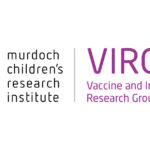headspace centres are a one-stop shop for young people with mental health and wellbeing concerns. They typically provide in-house access to mental health professionals, general practitioners, alcohol and other drug experts and vocational specialists. View our headspace centres. The following links will take you directly to our local partner sites.
Young people and mental health

As they mature, young people face complex challenges, such as establishing identity, learning to function as independent adults, and understanding sexuality.
As a cohort, they are more likely than the general population to engage in risk-taking behaviours that can affect their health, such as alcohol and drug use and engaging in unsafe sex.
Providing support to young adults is important. Health-related behaviours are usually established at this age, which means successful early intervention can significantly improve outcomes.
According to the Australian Institute of Health and Welfare, the 4 leading causes of mortality or morbidity among people aged between 15 and 24 are related to mental health. They are:
- Suicide
- Self-inflicted injury
- Anxiety disorder
- Depressive disorder
Overall, mental illnesses constitute almost half of all diseases recorded in the cohort.
The risk to mental health is present for every young person. However, statistically it is increased when they belong to one or more at-risk communities.
These include:
- Aboriginal and Torres Strait Islander communities
- culturally and linguistically diverse communities, especially those containing refugees and asylum-seekers
- lesbian, gay, bisexual, transgender, intersex and queer (LGBTIQ+) communities.
In addition, risks to mental health can be exacerbated for young people who are:
- homeless, or at risk of homelessness
- living with disability
- in, or at risk of becoming involved in, the judicial system.
How we help
Providing support to young adults is particularly important. Health-related behaviours are usually established at this age. Successful early intervention can significantly improve health outcomes.
We commission programs that can help to facilitate access to youth health professionals in safe, confidential, and youth-friendly environments.
-
headspace centres
-
Youth enhanced services
Youth enhanced services are designed for young people aged 12 to 25 who are experiencing or at risk of complex mental illness, and who can be appropriately supported in primary care. NWMPHN currently commissions several providers to deliver these services in its region. They include headspace centres, Orygen (through its Enrich program), Melbourne City Mission, St Vincent’s and the Victorian Aboriginal Health Service (VAHS). View our commissioned services for young people.
-
Doctors in Secondary Schools
Doctors in Secondary Schools (DiSS) provides school-based health services for the 100 Victorian secondary schools considered most in need. It funds a GP and nurse to consult with students on campus for one day a week during term-time. The program complements existing student wellbeing programs aimed at preventative health and improving health literacy. Learn more about DiSS.
-
Enhancing Mental Health Supports in Secondary Schools (EMHSS)
EMHSS provides enhanced mental health services to students in Victorian government secondary schools, increasing available mental health clinical capacity. It improves the ability of headspace centres to provide dedicated mental health workers during and after school hours to provide face-to-face assessment and counselling services. Learn more about EMHSS.
-
The Zone
The Zone is a new program run by the Youth Support and Advocacy Service (YSAS), Drummond Street Services, queerspace and Odyssey House Victoria built around the needs and diversity of young people. Learn more about The Zone.
Why is this work important?
The age range definition of “young people” differs from source to source. However, all national, state or region-specific research shares a common finding: young people are over-represented in many mental health measures.
Data from the Australian Institute of Health and Welfare shows that suicide accounted for 14.1 people per 100,000 in the 15 to 24 age bracket. This was significantly higher than the 12.7 per 100,000 figure for people of all ages.
The number of emergency department presentations due to suicide or self-harm across all ages in the NWMPHN region increased between 2020-21 and 2021-22. Among people aged between 10 and 29 the increase was largest for women.
Available data does not identify emergency department presentations due to suicide or self-harm for young trans, non-binary or intersex people. However, we know that these cohorts are among the most at-risk in the community. NWMPHN works with several partner organisations to explore and implement suicide prevention and mental health care strategies in this area.
In Victoria 26.9 per cent of people aged 18-24 years reported having high or very high levels of psychological distress – a larger proportion than in any other age group.
In the NWMPHN region, 19.1 per cent of hospitalisations for people aged 20 to 29 were ascribed to “mental and behavioural disorders”.












